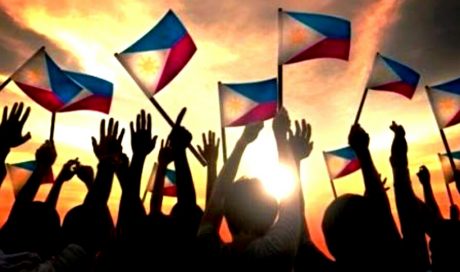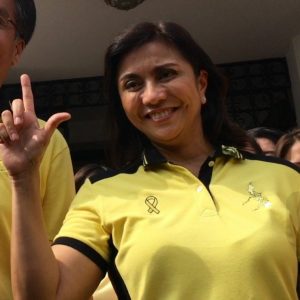
It no longer needs highlighting that Filipinos are now doing the right thing and embracing the leadership of President-Elect Rodrigo Duterte with open minds and a renewed hope in real change being implemented over the next six years. The reason Filipinos seem more inclined to take the journey together this time is that Duterte had marked his campaign not just with mere symbols of that call for unity but with hard evidence that he has walked in the shoes of Filipinos from all sectors of society. Just by being from Mindanao provides him a fresh lens with which to regard the no-win politics that infest Imperial Manila. Mindanao and the Visayas, after all, is where much of the internal strife amongst the Philippines’ various ethnic and cultural groups emanate and having been in the thick of all that makes Duterte all the more qualified to talk about “unity”.
In that sense, the unity that Duterte represents can be considered to be different from the notion of “unity” espoused by the traditional politicians that came to rule Manila before him. Traditional “unity”, to most, had more to do with unity across partisan camps. I’d like to think Duterte’s unity takes the partisan out of its equation and focuses on the Nation.
Key to this renewed sense of unity is the eradication of all symbols and relics of the old political order that fragmented the nation. Standing out amongst those relics is the Yellow brand. At no time in the Philippines’ history has its politics been as polarised as it was in the last 30 years since that “revolution” in 1986. The notion that the EDSA “people power” revolt that “toppled” the regime of the late former President Ferdinand Marcos was a revolution to begin with has all but been debunked.
In a short Facebook post, Netizen Kris Andres handily summed up the Philippines’ collective Eureka! moment that diagnosed the national delusion of the last 30 years and explains why, after billions of pesos “invested” by the Liberal Party in the candidacy of Mar Roxas and Leni Robredo, only a colossal loss and a mere tie with a Marcos respectively could be mustered:
Apparently, the numerous Cory and Ninoy monuments, the pre-school books glorifying the Aquino name, the annual People Power anniversary, the Cory musical, and the P500 bill are not enough to remind the Filipinos about Martial Law.But maybe that’s the problem. The Aquinos made it all about them.
And so now, Filipinos know: there was no revolution in 1986 — only the spectacle of a richly-landed Aquino-Cojuangco feudal clan seizing and holding hostage a big chunk of the national consciousness and colouring it Yellow. The result of this was a deep crack forming across the Philippines’ political landscape dividing the discourse between the Yellow folks and their-self ascribed “civil society” and that of all the rest. This is the legacy that outgoing President Benigno Simeon ‘BS’ Aquino III leaves his country who, for much if not all of his term as President, upheld the Yellow colours of his party over and above the national colours. Thus, the Aquinos and the Liberal Party leave a deeply-divided society that Duterte is, we all hope, cut out for the role of unifying.
Back in 2011, there already had been a call for President BS Aquino and his ilk to ditch that Yellow symbolism and adopt the national colours. He was than as he remains now, after all, the president of all Filipinos. The call, as we now see, was unheeded and was, like many other things about the Second Aquino Administration, a victim of BS Aquino’s stubborn devotion to an obsolete philosophy.

VP candidate Leni Robredo flashes the ‘Laban’ sign while wearing a Yellow shirt.
Thus the healing begins. Yellow has come to symbolise a national cancer that Filipinos now see as potentially curable. The cure to what has been called the “jaundiced” national politics of the last 30 years has, even this early, taken effect. Observers have even noticed Liberal Party Vice Presidential candidate Leni Robredo starting to distance herself from the Yellow brand and start wearing more neutral colours.
Having provided a newpath of thinking, the task at hand is clear for the new president. The main challenge for Duterte is to apply his no-nonsense style of governance as mayor to a scale and strategic level befitting that of a Chief Executive. This challenge can be encapsulated in the following truism:
Mayors go after snatchers and pickpockets. Presidents go after pork barrel thieves and election cheats.
Likewise, as president, unity is now all about what is good for all Filipinos. There are bigger fish to fry and less time to cook them. But that is what Duterte, presumably, signed up for.

No comments:
Post a Comment